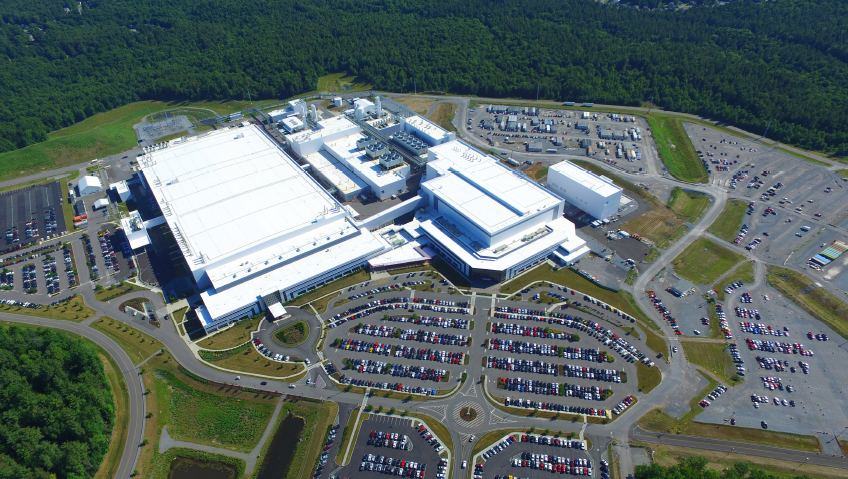The City of San Luis, Arizona, on the U.S.-Mexican border, is poised to become a key player in regional commerce and development, capitalizing on its unique position to build a dynamic economy that offers opportunities for all, according to Armando Esparza, San Luis’ Director of Economic Development and Government Affairs.
His department’s mission, Esparza tells us, is to attract, expand, and grow new businesses, focusing on high-growth industries that will create quality jobs for the city’s skilled labor force.
We speak with Esparza and Mayor Nieves Riedel, who lists some compelling reasons why San Luis is an ideal economic hub and an excellent place for both businesses and families to thrive. These reasons include the city’s affordable housing and reassuring ranking in 2023 by Safewise as Arizona’s safest city, a testament to the collaborative effort that has gone into maintaining this stellar record.
What seals the deal, however, is the sincerity that resonates in the mayor’s voice when she says that she and the city council “will bend over backward to make a business feel welcome in our safe and friendly city, no matter whether it plans to employ 20 people or 500. Everyone is treated with dignity and respect.”
According to the Arizona Office of Economic Opportunity, the city is estimated to grow in population to 57,664 in 2030 and 72,566 by 2050, a projected increase of 61.3 percent.
Location, location, location
San Luis’ strategic location in the southwest as a land port of entry gives businesses access to over 86 million consumers in a one-day trucking radius, including access to two of the world’s largest economies, Mexico and California, as well as Sonora and Baja California, Mexico, Central and South America, and Asian markets through the seaport of Ensenada, Mexico.
Because San Luis is only two and a half hours from San Diego and Venice and four hours from the port of Los Angeles, there’s an additional benefit of accessing the California market without having to operate in its high-cost, high-tax environment.
Moreover, because San Luis is within a Foreign Trade Zone (FTZ), industries have opportunities for the removal or reduction of tariffs, minimizing processing fees, and expediting the transport of goods from the port of entry.
Another advantage of the location is the amount of land available for expansion, as Mayor Riedel tells us. “We’re situated on a flat desert terrain, and we can grow as far as the eye can see, so the possibilities for businesses are unlimited. 25 years ago, San Luis occupied only three and a half square miles, with 10 to 12,000 people and one industrial park. Today we’re a 32-square-mile city with about 40,000 people and two industrial parks and there’s still room to grow, whereas ports like San Ysidro in San Diego and Nogales don’t have anywhere to grow.”
On the growth track
“This shows how we’ve had steady growth,” Mayor Riedel continues. In 2008 we had that horrible recession, and then we had COVID, but we were the only city that kept growing through both of those times, with people coming from California, Mexico, and other big cities. We think it’s because we are a safe place with good schools, affordable housing, and a mindset that welcomes people and businesses with open arms.”
Currently, she says, the city is looking to attract large retailers such as Lowe’s, which would benefit not only from local customers but from the “couple of million people who cross our border from Mexico and drive 30 miles to Yuma to shop.”
Although she couldn’t yet reveal details, she says the city was in talks with an electric battery component manufacturing company, a satellite communication company, and others who have shown interest.
Not only is San Luis welcoming young families and businesses, but with the opening of a medical mall and a hospital, Mayor Riedel says, the city is now ready to welcome seniors, who for medical reasons had tended to retire in Yuma, which has medical services but is much less affordable.
“I’m beginning to wine and dine Canadians now as we develop into a retirement center. Retirees bring so much to the table; they bring knowledge and volunteer in our schools and our kids learn from them and they learn from us.” Referring to her own Hispanic culture, she says, “We as Mexicans do respect and take care of the elderly because that is what our ancestors taught us.”
Major port project
Annually, the San Luis Ports of Entry I and II process over three million vehicles, over two and a half million pedestrians, and more than 30,000 commercial trucks carrying over one billion dollars in commodities.
Recognizing the critical role the San Luis Port of Entry I plays in the national economy, the Biden-Harris administration, through the U.S. General Services Administration (GSA) and the Department of Homeland Security, announced in June 2023 the launch of a $308 million project to modernize and expand it, replacing infrastructure not updated since the 1980s.
When completed, the port will see a 40 percent increase in pedestrian inspection capacity and a 100 percent increase in vehicle inspection capacity while alleviating congestion and boosting the local economy with well-paying jobs.
The port will double northbound vehicle inspection lanes from eight to 16, install a 16,000 square foot canopy, and support installation of the latest inspection technology in keeping with Customs and Border Protection. The project also includes a new 21,000 square foot pedestrian inspection building which will increase the number of booths from 10 to 14 and is expected to be fully operational in 2028.
In keeping with the Biden-Harris administration goals for the Federal Sustainability Plan, which calls for net-zero federal buildings by 2045, the port’s all-new electric and net-zero design integrates solar panels, advanced insulation materials, energy-efficient HVAC systems, and sustainable asphalt, concrete, and steel construction materials that will make the building more resilient in the desert environment.
“It’s a totally green project,” Mayor Riedel is happy to report. “Everything, from the LED lightbulbs to the air conditioning, is using solar energy. We can do that because we have 365 days of sun, which means we can depend on solar energy.”
Meanwhile, to connect the two ports of entry, which are on opposite sides of San Luis, the city is investing $62 million in the creation of a five-mile-long, four-lane boulevard to replace the current two-lane road. “This multi-modal corridor will be huge for us,” Esparza says, envisioning a dynamic future for the rapidly growing city.
San Luis’ demographic makeup is young, with a median age of 27.6 years, as compared with the state’s median age of 37.9 years and that of the nation at 38.8 as of the 2020 census.
Almost 40 percent are under the age of 19 and benefit from the San Luis education system that emphasizes career education, training people to take their place in a modern workforce. As Mayor Riedel tells us, “We have excellent schools and our kids in elementary grades are studying calculus. By the time some finish high school they’ve already received their associate’s degree from one of our three community colleges, and they’re well-prepared for work.”
Currently, San Luis has a labor force of more than 15,000 workers, with “99.9 percent of them fluent in both English and Spanish,” the mayor says, and a binational labor force of more than 43,000 workers, as per the U.S. Census Bureau and COPRESAN.
More affordable housing
As noted, San Luis is safe, having been ranked among the nation’s safest cities for many years and in 2023, the safest in Arizona. In addition, the schools are excellent. It boasts two community parks with another under construction, totaling nearly 51 acres, which Esparza says equates to 1.6 acres of space per 1,000 residents. El Golfo de Santa Clara, a sea town just 75 miles south of the border, offers recreational diving, sailing, swimming, and off-roading.
San Luis also offers a low cost of living and affordable housing, with houses of the same size and quality as those built in Yuma but priced up to $40,000 lower because the permit fees in Yuma are so high.
The number of high-quality, solar-powered, affordable houses in San Luis is also due in large part to the community development business Mayor Riedel began with her Michigan-born husband in 1999. “We could have built homes for the wealthy,” she says, “but we fell in love with the idea of making a difference by providing homes for people who were forgotten by the system.”
She herself came to the U.S. from Mexico as an 11-year-old with her family and says she and her husband “dedicated ourselves to building housing for people like my parents who never had the opportunity to own a home.” She goes on to note that the lumber used in their housing developments comes from Canada and that “our affordable homes are not one-room shacks; these are quality homes that families can be proud to own.”
Growing reflective, she says, “Our family has come a long way from working in the fields. Among the descendants of my parents are nurses, teachers, and business owners; two hold PhD degrees, three have master’s, and two have bachelor’s. Armando, our Economic Director, is another success story. His family also worked in the fields, and he now holds a master’s degree and is fluently bilingual. I’ve always said this is a land of opportunity and if you are willing to work, you can succeed.”
Not only are individuals succeeding here in San Luis, but it appears the city itself is on a highly successful trajectory.






